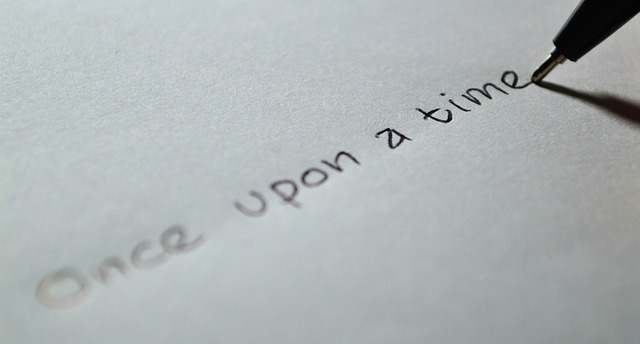This article contains easy steps on how to write a short story as well as examples.

Writing is not a skill meant for special breeds of humans. It can either be learned or innate. As long as it is a skill that can be learned, then anybody can be a writer. Whether fiction or nonfiction writing, anybody can write a story.
Basically, a story involves narrating real or fictitious events, involving real or imaginary humans. It often has a few characters in the plot. Although there are different forms of stories, short stories seem to be less tiring when you have a clear understanding of the components.
A short story consists of a character, setting, plot, and message. Like a novel, a good short story should thrill and entertain your reader.
Short stories are fictions that come in various types and sizes. Types of short stories include:
- Micro Fiction: 5 – 350 words
- Flash Fiction: 500 – 1,000 words
- Traditional: 1,500 – 5,000 words
Before we delve into the steps on how to write a short story, it is important you know the elements that make up a short story.
ELEMENTS OF A SHORT STORY
A writing cannot be called a story without some key elements in it. Here are the five key elements that make up a short story:
- Plot
- Character
- Setting
- Theme
- Conflict
1. Plot
A plot is an important element in story writing. Writers use the plot to map out their story before the writing process. In other words, the plot serves as a creative outline. It is a cause-and-effect chain of events that has a beginning point, a climax, and a resolution.
2. Character
There is no story without characters. The characters in a story are the people, animals, or other figures who are in the story. They take part in the action of a short story. Without characters, a story can’t exist.
3. Settings
This element in short stories is as important as the character. This is the time, place, and environment in which the characters and other events of the story exist. It could be represented by buildings, or weather or season to provide a strong sense of setting.
4. Conflict
A short story will be boring if there is no form of struggle or confusion. The conflict is the struggle between two people or characters or things in a short story.
5. Theme
The theme of a story may not necessarily be the title of the story like many people assume, most times it is not explicitly stated. It is simply the message that is conveyed from the writer to the reader through the short story. It can also be referred to by a layman as the moral lesson of the story.
Although short stories are forms of writing, not all writers are capable of writing short stories. So, are you interested in story writing?
Do you struggle coming up with short story ideas? Then keep reading this article as you will learn how to write a short story.
STEPS ON HOW TO WRITE A SHORT STORY
So, here is how to write a short story:
STEP 1: PRE-WRITING PHASE
Before you decide to write a short story, there are important steps you are required to take. Below are what you are required to do:
1. Be an Avid Reader of Great Stories
To be a good writer you must be an avid reader. Being a great story writer requires you to read a lot of fiction books.
Reading books helps you familiarize yourself with other great writers. It helps you evaluate and emulate their work. Overtime, you can start developing your own style and getting good at it.
2. Have A Great Story Idea
The first step to writing a good short story is to have a great story idea. Like the saying goes, “anything that is conceivable is achievable.” In other words, having a story idea in your mind is a step away from writing a short story. We know that a lot of things trigger great short story ideas that make you want to craft great writing around it. These triggers can be a person, a personal experience, fear, conflict, etc.
Come up with a plot or scenario. Think about what the story is going to be about and what is going to happen in the story. Decide what your approach to the story is going to be.
For instance, you can start with a simple plot like your main character has to deal with shocking news.
3. Develop Your Characters
Character is an important element of short stories and stories in general. As a creative writer, you may have a great story idea with poor characters. Hence, the need to focus on character development before starting to write. For great character development, it is advisable to create characters from people you know well. These could be friends or family members.
You only have a certain amount of time to show your readers who the main character is and you can’t achieve that if you don’t even know who they are. You will also be able to craft a much stronger story about your mother because you know her so well than writing about a character you have little or no knowledge of.
When learning how to write short stories, pay more attention to character development because that determines whether your story will appeal to your readers or not.
4. Make an Outline
A lot of writers make the mistake of writing without an outline. Having an outline is advised in order to have a cohesive flow throughout the story.
An Outline may include the following:
- The point of view you will use
- How you intend to start
- Conflict resolution
- The story ending
STEP 2: WRITING PHASE
Having gotten a story idea and other details needed to write a short story, the next phase is to commence writing.
5. Make Your First Draft
Outlining and research has to end at some point. Once this is completed, start writing. Your first draft is to simply get the story down without worrying about grammar and errors but the plot.
In other words, your first draft pays attention to the plot which is divided into five parts including:
- Exposition,
- An inciting incident,
- rising action,
- a climax, falling action
- a resolution.
These plot outlines will serve as a reference guide as you write the story to ensure it has a clear beginning, body and end.
6. Begin with an Engaging Opening
When writing, create an engaging opening, something out of the ordinary. Introduce the main character, theme and the setting to your reader in the first paragraph using a dialogue. Plunge your character into terrible trouble (conflict) from the beginning.
A dialogue is a verbal conversation between two or more characters. Through a dialogue, the writer allows the reader to know the characters first hand as well as interpret their characteristics and story themselves. In dialogue writing, punctuations are very essential as they are used to portray emotions.
Example:
Weak opening
I lost my appetite and zeal to work after the incident.
This opening is not only boring but does not tell your readers much about the character.
Engaging Opening
On the faithful day after I caught my fiance in bed with my best friend, I drove 5km to the mall to get flour for pastries I wasn’t going to bake.
This line gives the reader a past conflict (the fiance cheated), and tension in the present between the narrator and the Mall.
7. Stick to One Point of View
Short stories are usually told from a first-person point of view. Other times, a third person’s point of view can also be used but is not advisable. Whichever you intend to use, stick to it.
Most short stories are written in the past tense.
8. Have A Mind-blowing Ending
The way you end a story is as important as the opening. If possible, avoid obvious endings, where the reader can guess the ending before it happens. Instead, give your reader a false sense of prediction, where they think they know how the story is going to end, and then redirect their attention to another character that leaves them shocked and intrigued.
In other words, think of an ending with a twist or surprise.
Example:
Who would have imagined I would be a victim?
Of all days, on my Seventeenth birthday.
I cried, wailed and begged for mercy.
No help came till I passed out
I smiled. I just became a woman.
Susan must hear about my first menstrual experience.
From the beginning, most readers would probably conclude it’s a crime story but in the end there was a twist. You can choose to end your short story with a twist.
9. Come Up with an Interesting Title
The title of the story first determines whether the story will be read or not. Though it is the first thing that readers see first, most times, it is generated last. Of course, it is advisable to choose a story title after writing so as not to be restricted to the title while writing.
When picking a title, go for one that will interest your reader and encourage them to read the actual story. There is a tendency the title might get changed by editors, but it is not something to worry about.
STEP 3: EDITING PHASE
The quality of your story is determined by how well it was edited. So, when you have finished writing your story, the main work lies in the editing phase. This is where you look out for grammar, spelling, punctuation, sentence construction, clichés, redundancies and lots more. Reading the story aloud helps you to easily spot any spelling, grammar, or punctuation errors.
One great way to edit is to show the short story to friends and family members for constructive criticism.
CONCLUSION
Like the name implies, short stories are usually better when they are brief and concise yet passing a message.
Most short stories are between 1,000 to 6,000 words long. Hence, the need to be open to editing and removal of unnecessary explanations or sentences. Make sure you only include characters, details and moments that are essential to the story you are trying to tell.
You wouldn’t know how much of a great story writer you are until you try, using the information in this article.
Thinking of where to get inspiration to start writing? Araby is a good example of a short story.
Kindly like us on Facebook & follow us on Follow @EAfinder OR leave a comment below for further inquiries or suggestions.




